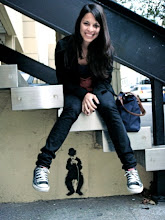
War films are not my favorite kind of films. It is difficult for me to connect and relate with the characters usually because the extensive scenes of warfare and gunfire tend to alienate me. This is why I was surprised by the fact that I felt so much and connected in such a deep level with Rossellini’s Rome Open City. Even though Italian films of the 20’s are well known for their attempts to portrait the world as it was, Rome Open City was the first of this series of films in which I truly felt as if I was following and witnessing real lives, feeling, and events. It appears be a documentary without loosing the qualities of a feature film.
The acting took the film to a complete different level. You can feel the characters’ emotions pouring out of their faces with such naturalness and sincerity that is hard to imagine they are actually acting. Thus, the connection and sympathy created between the audience and characters makes it unavoidable to be completely submersed in their story.
Nevertheless, I have to confess that I might be significantly bias when analyzing this film. My grandfather was a journalist part of the Italian Resistance (Partigiani). He used to tell me plenty of stories about the quests he and his friends would go through to print articles and flyers denouncing their situation. In addition, he would never miss on telling us the time he was taken by the German army and was extremely close to be shoot with other prisoners. It might be true that because I had all these stories in the back of my mind I was able to relate deeply with the characters. For example, I still remember vividly the scene in which Pina is killed in front of her son. It might be because Rome Open City echoes all the stories I listened to when growing up. Nevertheless, it cannot be denied that Rossellini mastered the editing, mise-en-scene, and acting.

No comments:
Post a Comment